A New Recycling Process for Tungsten Carbide Soft Scrap That Employs a Mechanochemical Reaction with Sodium Hydroxide
Abstract
:1. Introduction
2. Experimental Procedure
2.1. Starting Materials and Characterization
2.2. Experimental Procedure
2.3. Characterization
3. Results and Discussion
3.1. Oxidation of the Starting Sample, Soft Scrap Passed by #500 Sieve
3.2. MC Reaction of the Oxidized Scrap with NaOH
3.3. Water-Leaching for the Ground Mixture of the Soft Scrap and NaOH
4. Conclusions
Acknowledgments
Author Contributions
Conflicts of Interest
References
- Penrice, T.W. Alternative binders for hard metals. J. Mater. Shap. Technol. 1987, 5, 35–39. [Google Scholar] [CrossRef]
- Ogwu, A.A.; Davies, T.J. Proposed selection rules for suitable binders in cemented hard metals with possible applications for improving ductility in intermetallics. J. Mater. Sci. 1992, 27, 5382–5388. [Google Scholar] [CrossRef]
- Paul, R.L.; Te Riele, W.A.M.; Nicol, M.J. A novel process for recycling tungsten carbide scrap. Int. J. Miner. Process. 1985, 15, 41–56. [Google Scholar] [CrossRef]
- Grzesik, W. Advanced Machining Processes of Metallic Materials: Theory, Modelling and Applications, 1st ed.; Elsevier: Oxford, UK, 2008. [Google Scholar]
- Prakash, L.J. Application of fine grained tungsten carbide based cemented carbides. Int. J. Refract. Met. Hard Mater. 1995, 13, 257–264. [Google Scholar] [CrossRef]
- Lee, D.J.; Yoo, C.S. Predicting a promising fusion technology in geoscience and mineral resources engineering using Korean patent data. Geosyst. Eng. 2014, 17, 34–42. [Google Scholar] [CrossRef]
- Nakamura, T. E-Scrap recycling system and technologies in Japan. Geosyst. Eng. 2014, 17, 104–112. [Google Scholar] [CrossRef]
- Shibata, J.; Murayama, N.; Niinae, M. Recovery of tungsten and cobalt from tungsten carbide tool waste by hydrometallurgical method. Geosyst. Eng. 2014, 17, 120–124. [Google Scholar] [CrossRef]
- Han, K.N.; Kellar, J.J.; Cross, W.M.; Safarzadeh, S. Opportunities and challenges for treating rare-earth elements. Geosyst. Eng. 2014, 17, 178–194. [Google Scholar] [CrossRef]
- Kim, J.R.; Song, Y.E.; Munussami, G.; Kim, C.M.; Jeon, B.H. Recent applications of bio electrochemical system for useful resource recovery: Retrieval of nutrient and metal from wastewater. Geosyst. Eng. 2015, 18, 173–180. [Google Scholar] [CrossRef]
- Lee, J.R.; Lee, J.W.; Kim, B.J.; Kim, Y.J. Leaching behavior of Al, Co and W from the Al-alloying treated WC-Co tool as a new recycling process for WC hard scrap. Metals 2016, 6, 174. [Google Scholar] [CrossRef]
- Walraedt, J. The coldstream process: A new powder production equipment. Powder Metall. Int. 1970, 3, 24–27. [Google Scholar]
- Barnard, P.G.; Heine, K. Reclamation of Refractory Carbides from Carbide Materials. U.S. Patent 3,595,484, 27 July 1971. [Google Scholar]
- Edward, M.T. Process of Separating Hard Constituents from Sintered Hard Metals. U.S. Patent 2,407,752, 17 September 1946. [Google Scholar]
- Kojima, T.; Shimizu, T.; Sasai, R.; Itoh, H. Recycling process of WC-Co cermets by hydrothermal treatment. J. Mater. Sci. 2005, 40, 5167–5172. [Google Scholar] [CrossRef]
- Malyshev, V.V.; Gab, A.I. Resource-saving methods for recycling waste tungsten carbide-cobalt cermets and extraction of tungsten from tungsten concentrates. Theor. Found. Chem. Eng. 2007, 41, 436–441. [Google Scholar] [CrossRef]
- Ghandehari, M.H.; Faulkner, J.K.; Schussler, M. Selective dissolution of the binder phase alloy (Co-W) from WC-Co cemented carbides in particulate bed electrode systems. J. Electrochem. Soc. 1982, 129, 2666–2668. [Google Scholar] [CrossRef]
- Brookes, K.J.A. Reclaimed tungsten powders with ‘virgin’ properties. Met. Powder Rep. 1990, 45, 131–132. [Google Scholar] [CrossRef]
- Venkateswaran, S.; Schubert, W.D.; Lux, B.; Ostermann, M.; Kieffer, B. W-scrap recycling by the melt bath technique. Int. J. Refract. Met. Hard Mater. 1996, 14, 263–270. [Google Scholar] [CrossRef]
- Gu, W.H.; Jeong, Y.S.; Kim, K.M.; Kim, J.C.; Son, S.H.; Kim, S.J. Thermal oxidation behavior of WC-Co hard metal machining tool tip scraps. J. Mater. Process. Technol. 2012, 212, 1250–1256. [Google Scholar] [CrossRef]
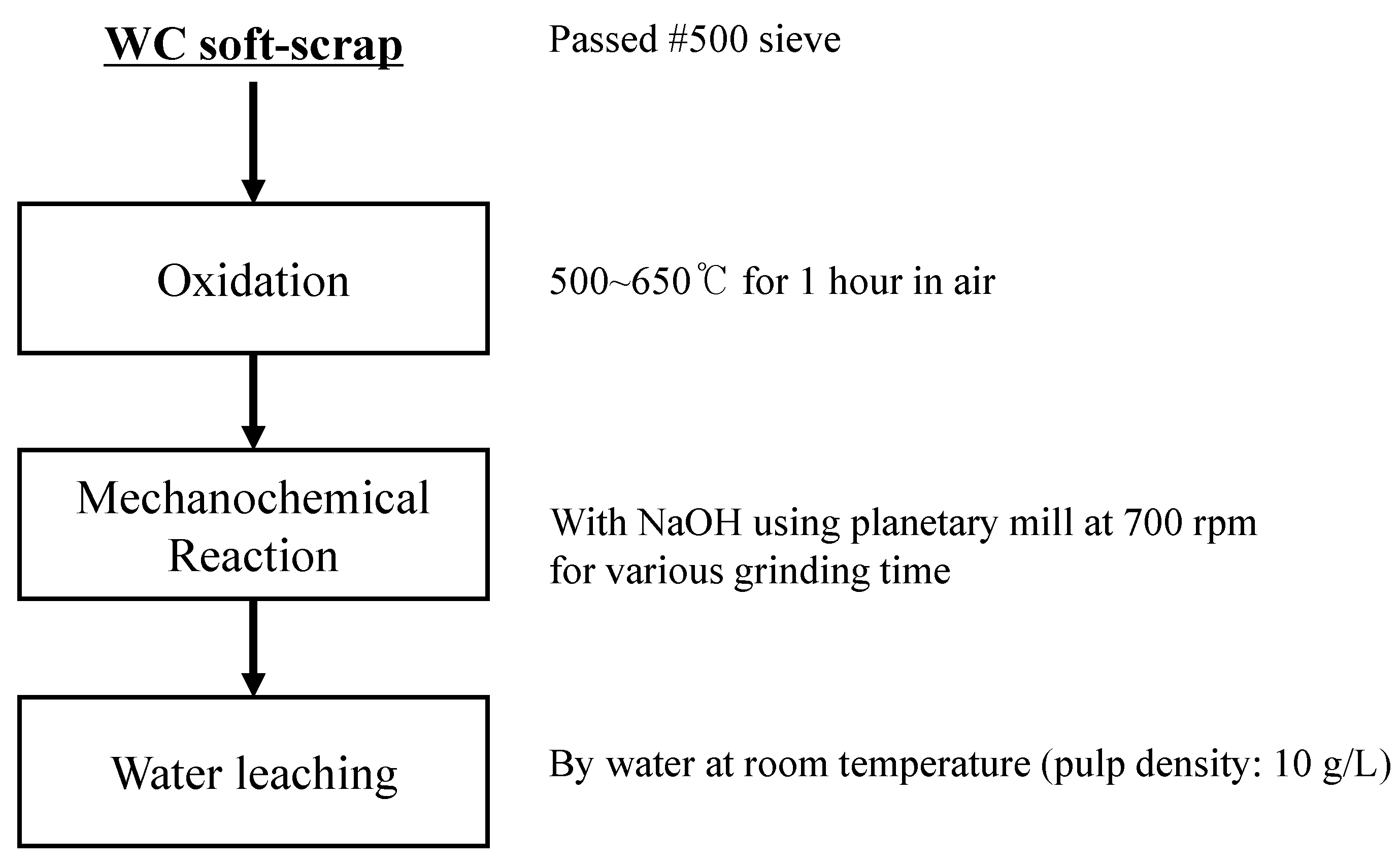
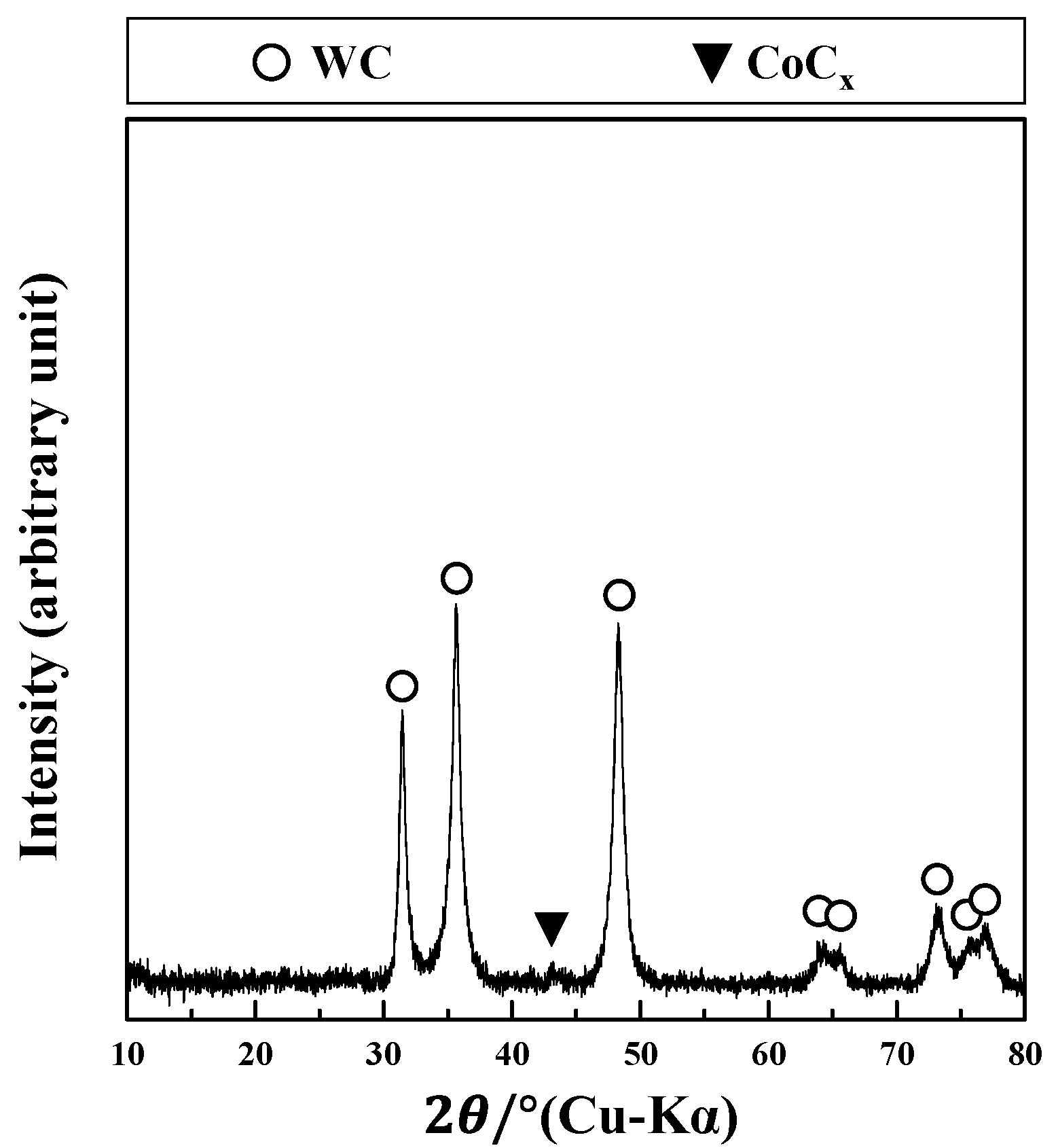
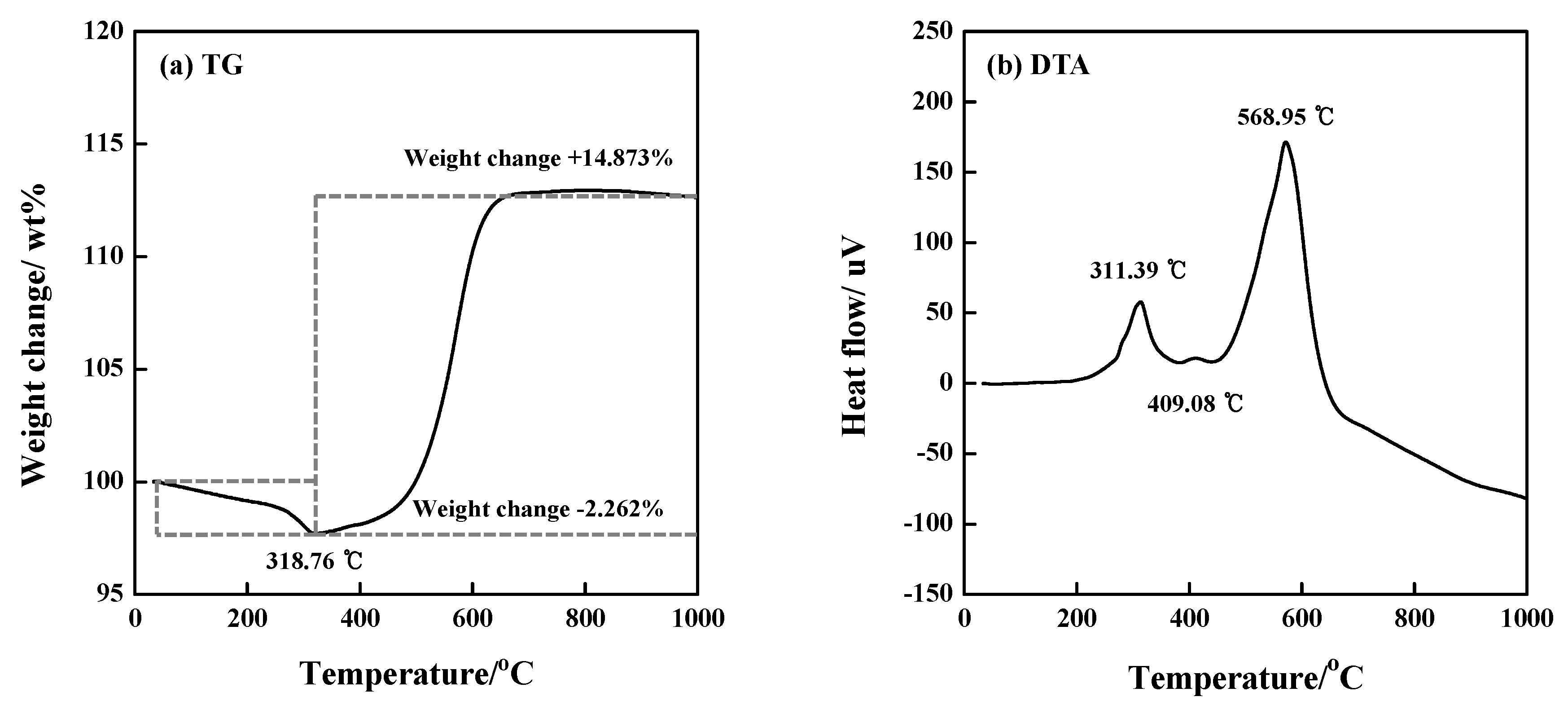

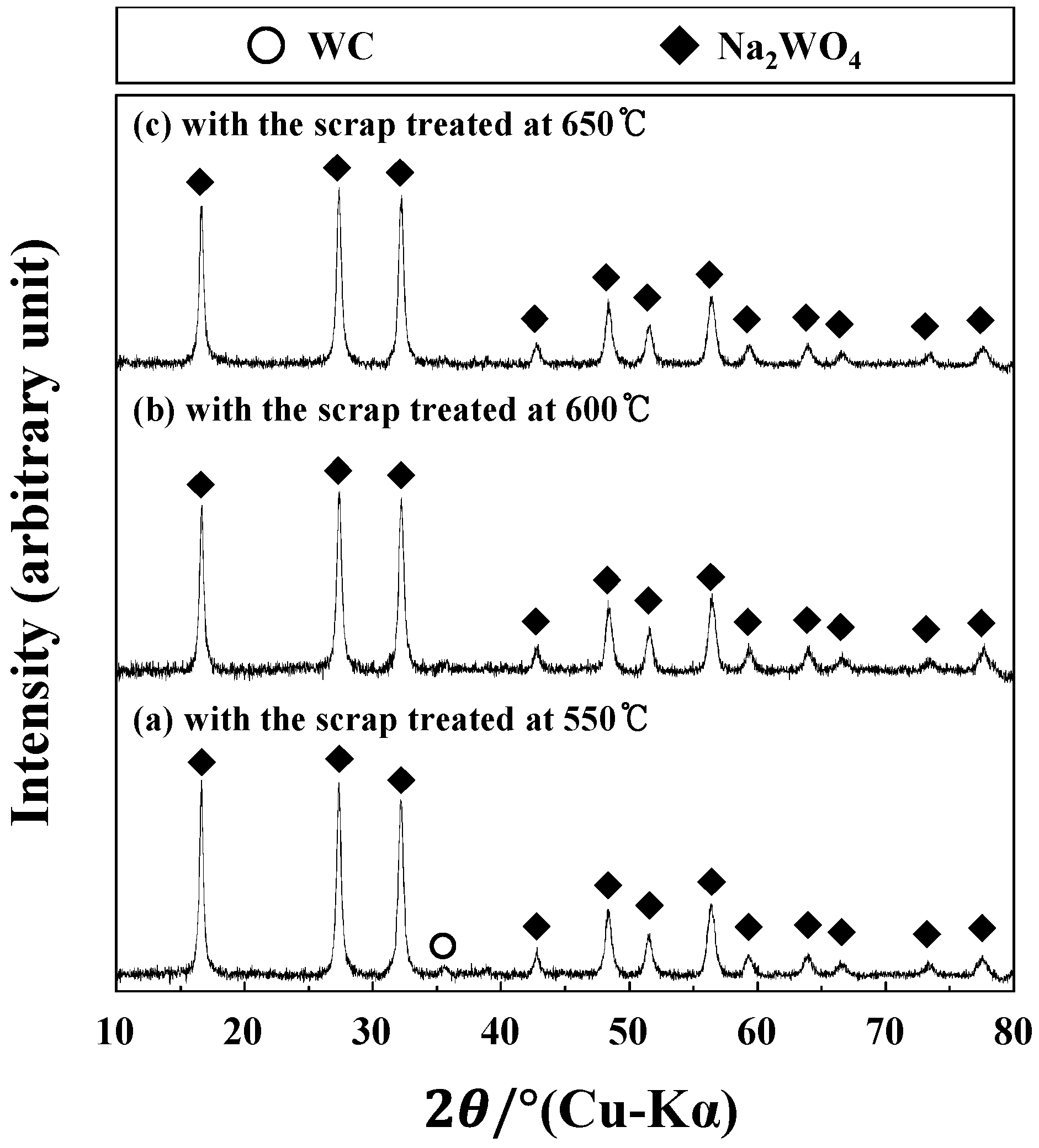
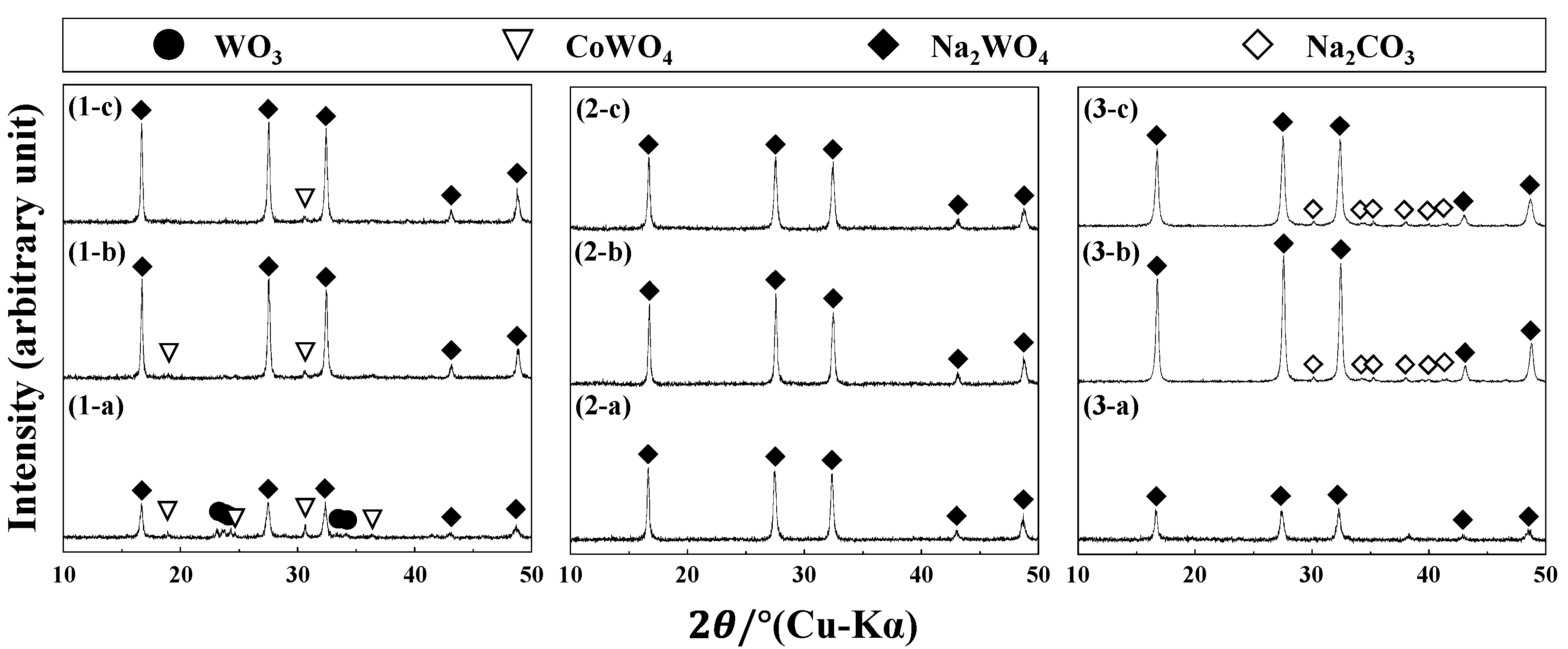
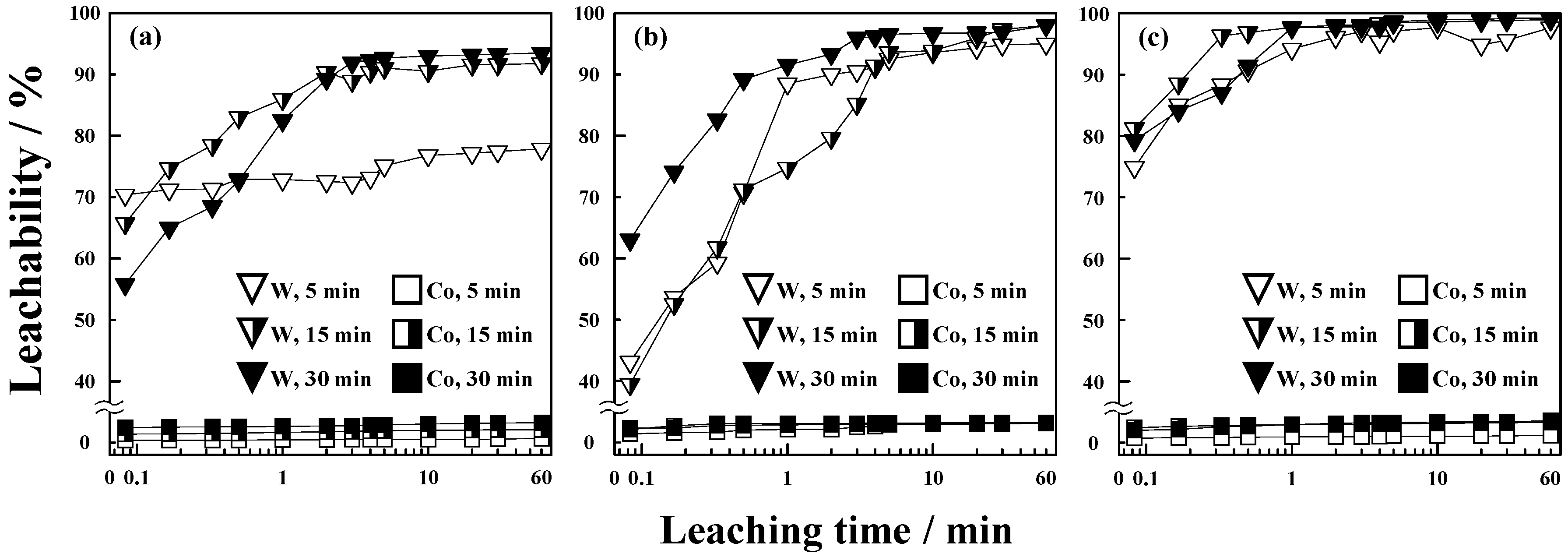
| Element | Content (wt %) | Element | Content (wt %) |
|---|---|---|---|
| W | 54.3 | Al | 0.19 |
| Co | 5.25 | Cu | 0.07 |
| Si | 1.95 | V | 0.05 |
| Fe | 1.56 | Mo | 0.05 |
| Cr | 0.28 | C | 15.7 |
| Nb | 0.24 | O | 16.6 |
| Ni | 0.23 | Others (B, Na, P, K) | 3.56 |
© 2017 by the authors. Licensee MDPI, Basel, Switzerland. This article is an open access article distributed under the terms and conditions of the Creative Commons Attribution (CC BY) license (http://creativecommons.org/licenses/by/4.0/).
Share and Cite
Lee, J.; Kim, S.; Kim, B. A New Recycling Process for Tungsten Carbide Soft Scrap That Employs a Mechanochemical Reaction with Sodium Hydroxide. Metals 2017, 7, 230. https://doi.org/10.3390/met7070230
Lee J, Kim S, Kim B. A New Recycling Process for Tungsten Carbide Soft Scrap That Employs a Mechanochemical Reaction with Sodium Hydroxide. Metals. 2017; 7(7):230. https://doi.org/10.3390/met7070230
Chicago/Turabian StyleLee, Jaeryeong, Suyun Kim, and Byoungjin Kim. 2017. "A New Recycling Process for Tungsten Carbide Soft Scrap That Employs a Mechanochemical Reaction with Sodium Hydroxide" Metals 7, no. 7: 230. https://doi.org/10.3390/met7070230





